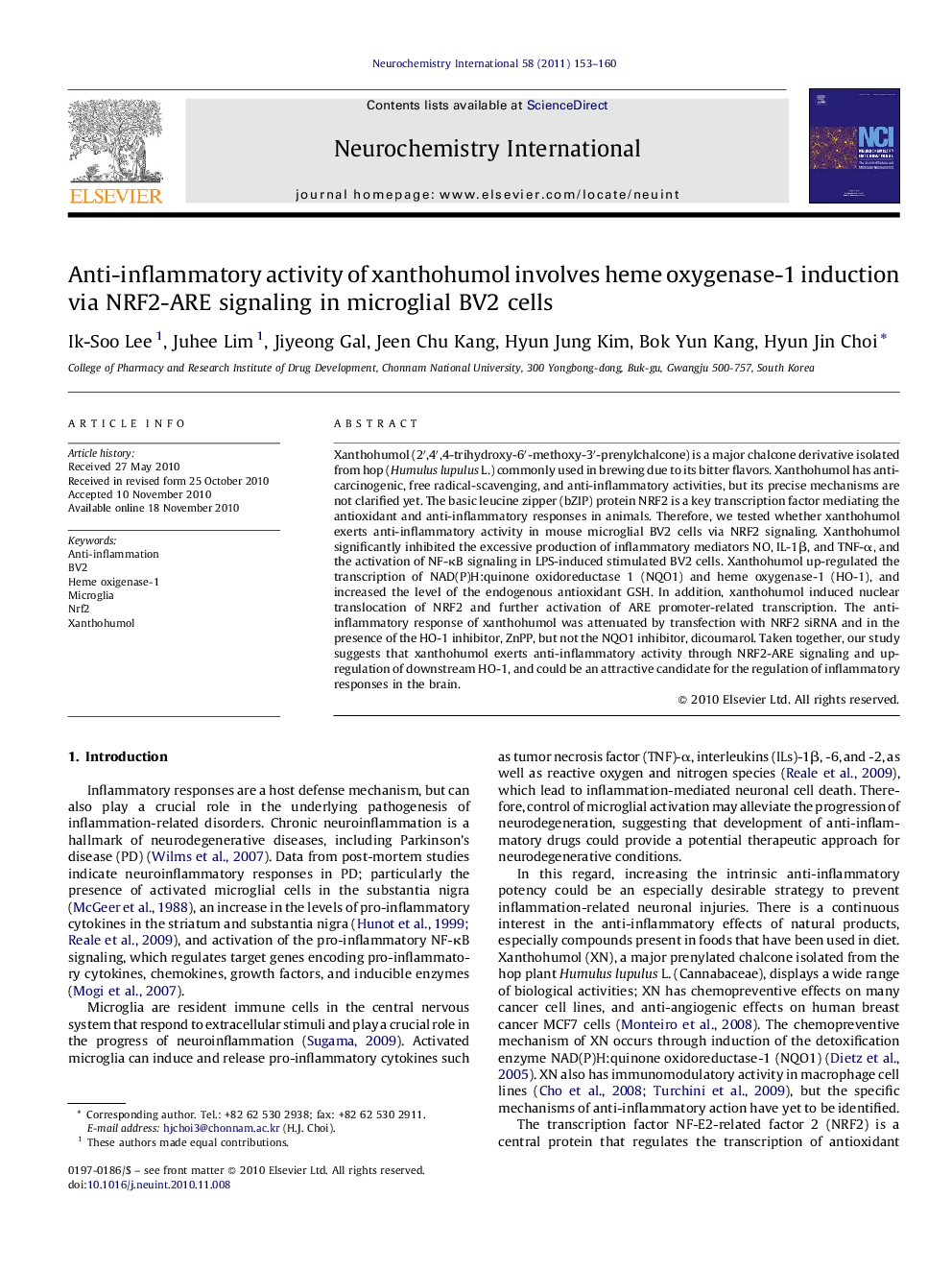| کد مقاله | کد نشریه | سال انتشار | مقاله انگلیسی | نسخه تمام متن |
|---|---|---|---|---|
| 2201156 | 1100001 | 2011 | 8 صفحه PDF | دانلود رایگان |

Xanthohumol (2′,4′,4-trihydroxy-6′-methoxy-3′-prenylchalcone) is a major chalcone derivative isolated from hop (Humulus lupulus L.) commonly used in brewing due to its bitter flavors. Xanthohumol has anti-carcinogenic, free radical-scavenging, and anti-inflammatory activities, but its precise mechanisms are not clarified yet. The basic leucine zipper (bZIP) protein NRF2 is a key transcription factor mediating the antioxidant and anti-inflammatory responses in animals. Therefore, we tested whether xanthohumol exerts anti-inflammatory activity in mouse microglial BV2 cells via NRF2 signaling. Xanthohumol significantly inhibited the excessive production of inflammatory mediators NO, IL-1β, and TNF-α, and the activation of NF-κB signaling in LPS-induced stimulated BV2 cells. Xanthohumol up-regulated the transcription of NAD(P)H:quinone oxidoreductase 1 (NQO1) and heme oxygenase-1 (HO-1), and increased the level of the endogenous antioxidant GSH. In addition, xanthohumol induced nuclear translocation of NRF2 and further activation of ARE promoter-related transcription. The anti-inflammatory response of xanthohumol was attenuated by transfection with NRF2 siRNA and in the presence of the HO-1 inhibitor, ZnPP, but not the NQO1 inhibitor, dicoumarol. Taken together, our study suggests that xanthohumol exerts anti-inflammatory activity through NRF2-ARE signaling and up-regulation of downstream HO-1, and could be an attractive candidate for the regulation of inflammatory responses in the brain.
Research highlights▶ Xanthohumol (XN) inhibits LPS-stimulated inflammatory responses in microglial BV2 cells. ▶ XN activates Nrf2 pathway and up-regulates HO-1 which plays as anti-inflammatory mechanism of XN. ▶ Chronic neuroinflammation is a hallmark of neurodegenerative diseases. ▶ The present study provides an attractive strategy to prevent neurodegenerative diseases.
Journal: Neurochemistry International - Volume 58, Issue 2, February 2011, Pages 153–160